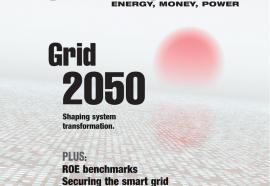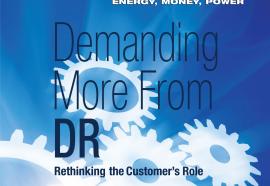Midwest ISO
Green Power Control
Preparing the grid for large-scale renewables.
With large solar arrays and wind farms being proposed to connect to transmission and sub-transmission systems, are utility companies sufficiently prepared to handle the challenge of integrating these large intermittent resources? The industry now must decide whether transmission reliability factors — most notably dynamic voltage support and system frequency management — need to be resolved by renewable generators, or whether they should become a cost of doing business for transmission providers and reliability coordinators.
People (May 2011)
Vendor Neutral
(March 2011) TVA and EPRI demonstrate solar-assisted EV charging station; Ford unveils the all-electric Focus; Central Maine Power awards substation contracts; ERCOT deploys ABB software in nodal market; FirstSolar starts up PV plant for Southern Company and Ted Turner; plus contracts and announcements involving Open Systems International, Verizon, Suntech Power, Alcatel-Lucent, Siemens, Cisco, Elster, Sensus, Silver Spring Networks and others.
Solar Hype and Hope
Utility-scale projects suffer growing pains.
Anyone who’s been watching the solar power industry for more than a few years can’t help but be impressed by the recent explosion of large-scale projects. It seems akin to the rapid scale-up of wind in the late 1990s and early 2000s—when megawatt-scale turbines became standard-issue, and the definition of a “large” wind farm changed from a capacity of 20 MW to something more like 200 MW.
Capacity Contest
Raising the stakes in RTO markets.
Generators and demand-response providers are reaping rewards in forward capacity auctions, causing suppliers to go shopping for the most lucrative markets. Now the Midwest ISO is trying to catch up, by proposing its own auction for years-ahead resource bids. But does RTO shopping serve the interests of customers, who are legally entitled to rates that are just and reasonable? Why are some state policy makers advocating a return to old-school RFPs for long-term contracts?
People (January 2011)
NARUC elects new Executive Committee, Arizona State University chooses former ACC Commissioner Mayes as head of new program at Sandra Day O’Connor College of Law, executive announcements at Southern Company, Calpine, Dominion and more.
DR Distortion
Are subsidies the best way to achieve smart grid goals?
FERC has proposed that wholesale energy markets should subsidize load reductions with full LMP (locational marginal price), without deducting the customers’ retail savings. Such a policy could distort the market, and other solutions might achieve the same objectives more efficiently.
Pricing Negawatts
DR design flaws create perverse incentives.
Demand response isn’t energy: It’s a separate product, traded in a separate market. Policy trends, however, are moving toward equal treatment for demand and supply resources in electricity markets. Does treating DR as energy inflate its value and create perverse incentives?
Every Last Penny
Transmission cost allocation, the worth of the grid, and the limits of ratemaking.
A look at the issues that the Federal Energy Regulatory Commission must address concerning allocation of costs for certain high-voltage transmission lines 500kV or greater, planned for the PJM region, in the “paper hearing” on remand from the 7th Circuit federal court decision that rejected a socialized, region-wide sharing of costs among all utilities and customers across the RTO footprint.









